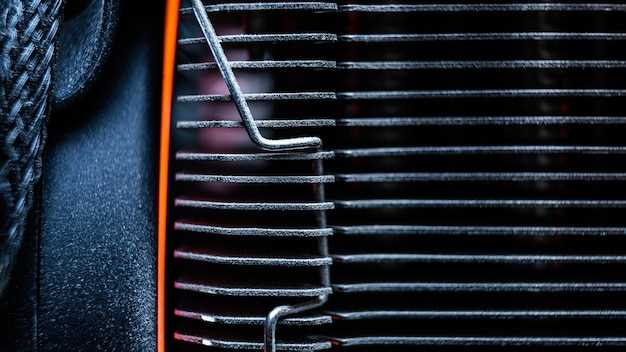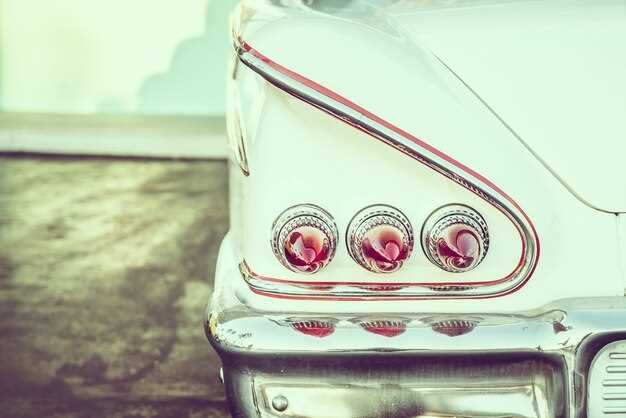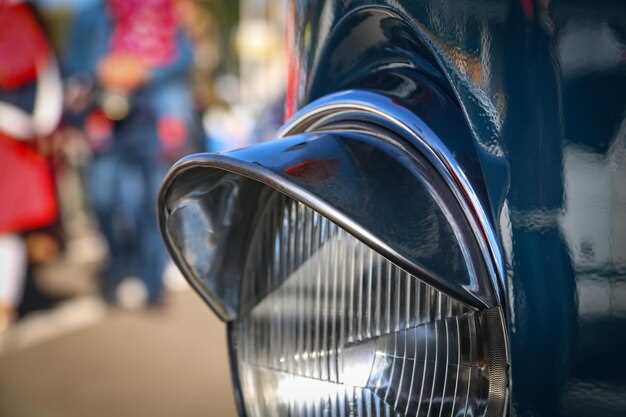
When it comes to maintaining vintage Porsche vehicles, the cooling system is one of the most critical components to ensure optimal performance and longevity. Over time, these classic machines can experience wear and tear that affects their ability to regulate engine temperature effectively. Regular inspection of the cooling system can help prevent overheating and extensive engine damage.
Key elements of the cooling system include the radiator, hoses, and coolant levels. Each component plays a vital role in the overall functionality of the system. By thoroughly inspecting the radiator for any signs of leaks or corrosion, as well as ensuring that hoses are intact and not prone to cracking, owners can maintain the integrity of their Porsche’s cooling system.
Additionally, monitoring coolant levels and quality is essential. Fluids can degrade over time, leading to inefficiency in heat dispersion. Keeping an eye on these factors not only preserves the vehicle’s performance but also enhances the driving experience that Porsche enthusiasts cherish. In this article, we will delve deeper into the specific aspects of the cooling system that require regular attention.
Porsche Classic Cooling Systems: What to Inspect
Maintaining optimal performance in Porsche classic vehicles requires careful inspection of the cooling system. The cooling system is crucial for regulating engine temperature, preventing overheating and ensuring longevity. Regular checks help identify potential issues before they escalate.
Start with the coolant levels. Low coolant can lead to insufficient cooling, increasing the risk of engine damage. Check the coolant reservoir for appropriate levels and inspect for any signs of leaks in the hoses or connections. Replace any worn or cracked hoses to prevent coolant loss.
Examine the radiator for debris and blockages that can impede airflow. A clean radiator enhances cooling efficiency, allowing it to effectively dissipate heat. Also, assess the radiator cap; a faulty cap can lead to pressure loss and boiling over, compromising temperature regulation.
The water pump should be inspected for leaks or unusual noises, which could indicate wear. A functioning water pump is essential for circulating coolant throughout the engine. If you detect any anomalies, consider replacing the pump to maintain cooling efficiency.
Check the thermostat for proper operation. A malfunctioning thermostat might either stay closed, causing overheating, or remain open, preventing the engine from reaching its optimal operating temperature. Testing or replacing the thermostat can significantly improve cooling performance.
Lastly, don’t overlook the fan operation. Ensure that the cooling fan activates at the correct temperature. A fan that fails to engage can lead to overheating, especially in traffic or during hot weather. Regularly test the fan and repair or replace it as necessary.
By systematically inspecting these components, you can help ensure that your Porsche classic maintains proper temperature and efficient cooling, ultimately enhancing its performance and reliability on the road.
Checking for Coolant Leaks in Porsche Classic Models
Maintaining the cooling system in Porsche classic models is essential to ensure optimal engine performance and temperature regulation. Coolant leaks can lead to overheating and significant engine damage. Here are key steps to effectively inspect for coolant leaks.
- Visual Inspection:
Start with a thorough visual inspection of the cooling system components, including hoses, clamps, and the radiator. Look for any signs of coolant accumulation or dampness around these areas.
- Check Hoses:
Examine all hoses for cracks, bulges, or abrasions. Pay close attention to areas where hoses connect to the engine and radiator, as these are common leak points.
- Inspect the Radiator:
Inspect the radiator for any corrosion or damage. Look for signs of coolant weeping from around the seams or mounting points. A damaged radiator can drastically affect cooling efficiency and temperature control.
- Monitor Coolant Levels:
Periodically check the coolant reservoir level. A declining level may indicate a leak in the system. Always top off with the appropriate coolant fluid to maintain the right temperature.
- Pressure Test:
Consider performing a pressure test on the cooling system. This involves using a pressure tester to identify leaks that may not be visible. Apply the appropriate pressure as per manufacturer specifications and check for drops in pressure over time.
- Check Engine Block:
Inspect the engine block for any signs of coolant leaking from gasket failures or cracks. This requires a more in-depth assessment, as leaks in these areas can lead to severe overheating and engine failure.
- Look for Discoloration:
Check for any discoloration on engine components, which may indicate coolant contamination. This could be a sign of a head gasket leak.
Identifying coolant leaks early is crucial for preserving the performance and integrity of Porsche classic models. Regular inspections help ensure the cooling system operates efficiently, maintaining optimal temperature and protecting the engine from potential damage.
Assessing Radiator Condition and Performance

The radiator is a crucial component of the cooling system in your Porsche, responsible for dissipating heat generated by the engine. Regular assessment of the radiator’s condition and performance is essential to ensure optimal engine temperature management and prevent overheating.
Begin by visually inspecting the radiator for any signs of damage, such as cracks, leaks, or corrosion. A thorough examination of the radiator fins is also important; bent or clogged fins can significantly impair airflow, reducing the system’s cooling efficiency. Ensure that the radiator is free from debris and that the mounting brackets are secure.
Next, check the coolant level and quality. The coolant should be in good condition, free from contaminants and with an appropriate mix of antifreeze. Low coolant levels can indicate potential leaks in the system, including the radiator itself. Refill the coolant as necessary and consider flushing the system if the coolant appears dirty or deteriorated.
Evaluate the performance of the radiator by monitoring engine temperatures during typical driving conditions. If the engine runs hotter than normal or the temperature gauge fluctuates excessively, this may signal a problem with the radiator’s ability to dissipate heat. Additionally, consider testing the radiator’s pressure, as a faulty pressure cap can lead to boiling coolant and reduced cooling efficiency.
Lastly, if you notice persistent issues despite visual checks and coolant maintenance, a professional inspection may be warranted. A technician can conduct more in-depth evaluations, such as flow tests and leak detection, to identify and address any underlying problems with the radiator and the overall cooling system.
Monitoring Engine Temperature: What is Normal and What to Do if it Rises

Maintaining the proper engine temperature is crucial for the performance and longevity of your Porsche. Typically, the normal operating temperature for most Porsche engines ranges between 180°F to 220°F (82°C to 104°C). Keeping an eye on this range ensures that the cooling system is functioning correctly and that the engine is not overheating.
To monitor engine temperature effectively, regularly check the temperature gauge on the dashboard. Variations outside the normal range can indicate a problem within the cooling system, such as low coolant levels, a malfunctioning thermostat, or a failing water pump. Be proactive: inspect coolant levels and ensure the radiator and hoses are free of blockages.
If you notice the temperature rising above the normal range, take immediate action to prevent engine damage. First, pull over safely and turn off the engine. Allow the engine to cool down before inspecting the cooling system. Check for visible leaks, and assess coolant levels in the reservoir. If necessary, add coolant to restore levels and verify that the expansion tank cap is secure.
If the problem persists, it may indicate a more serious issue requiring professional diagnostics. Ignoring rising temperatures can lead to severe engine damage, including head gasket failure or warped cylinders. Regular maintenance of your Porsche’s cooling system is essential for optimal performance and reliability.
 Skip to content
Skip to content





